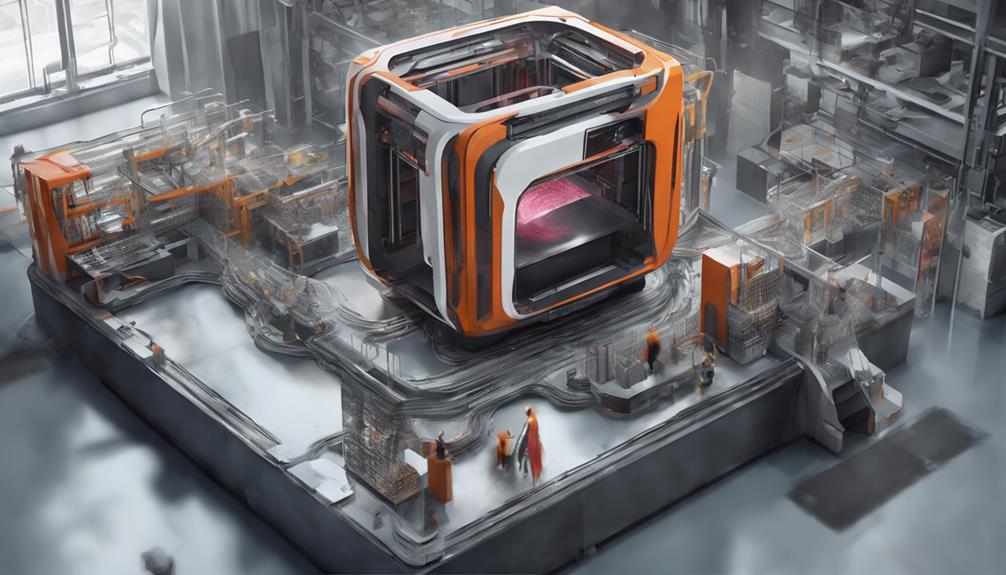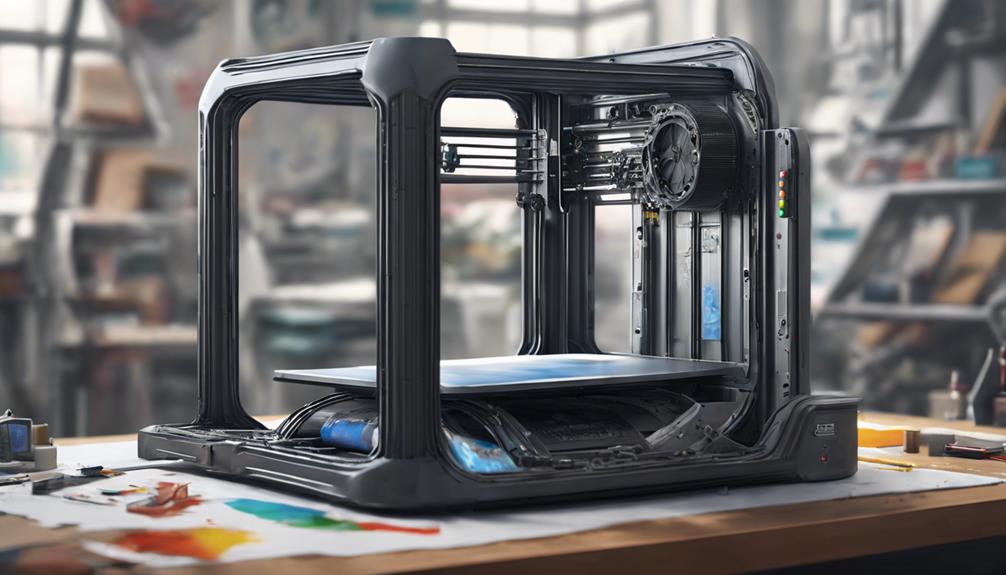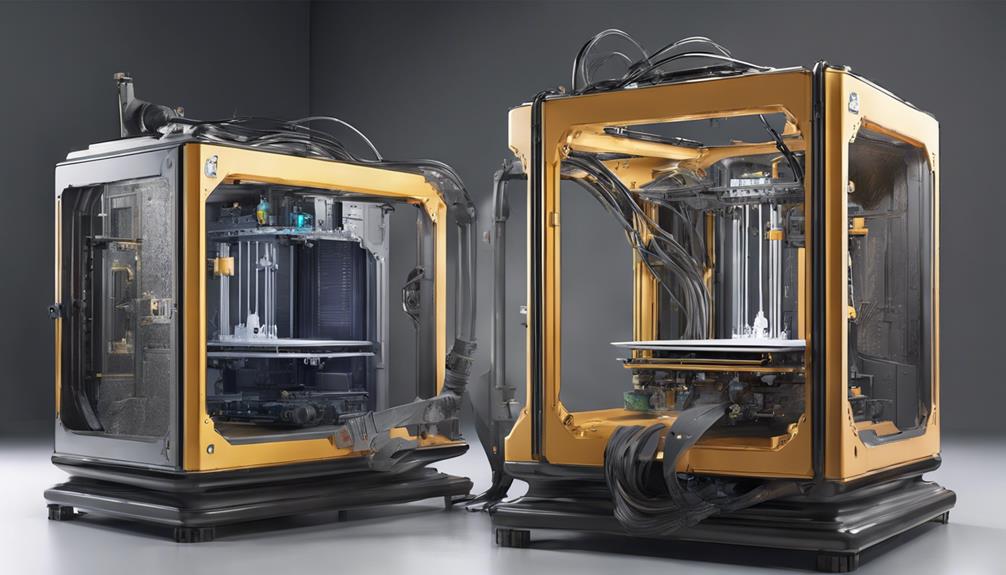The domain of large 3D printers has witnessed a significant evolution, with cutting-edge technology pushing boundaries and redefining what's possible in modern manufacturing processes. These impressive machines are not just about size; they bring a new level of precision and intricacy to the creations they produce. As we explore the capabilities of these larger-than-life printers, it becomes evident that they hold the key to accessing a world of endless possibilities. The fusion of innovation and scale in this field is reshaping industries and sparking curiosity about what the future holds for large-scale 3D printing.
Benefits of Large 3D Printers

Large 3D printers offer many advantages in the world of additive manufacturing. They enable the construction of much larger pieces that traditional-sized printers cannot accommodate. The ability to create bigger prints opens up new possibilities for industries such as aerospace, automotive, and architecture.
With large volume 3D printers, contiguous printing becomes possible, eliminating the need for assembling parts post-printing. These printers also offer big batch printing capabilities, allowing for the production of multiple pieces in a single job.
Additionally, larger printers enable the printing of large batches of smaller objects simultaneously, increasing efficiency and reducing overall production time. The advantages of large 3D printers are instrumental in pushing the boundaries of design and manufacturing processes.
Limitations of Large Volume 3D Printing
While large 3D printers offer numerous advantages in additive manufacturing, they also come with certain constraints that impact their overall usability and efficiency. Some limitations of large volume 3D printing include:
- Moving print bed affects build quality: The larger the print bed, the more susceptible it is to vibrations and inconsistencies during printing, potentially affecting the final output.
- Big print jobs use more filament and time: Larger prints require more material and longer printing times, increasing costs and production times.
- Dealing with larger printers can be time-consuming: Setting up, calibrating, and maintaining large 3D printers can be more complex and time-intensive compared to smaller models.
Larger Printers and Print Speed

When considering the relationship between larger 3D printers and print speed, it is essential to analyze how the size of the printer impacts the efficiency of the printing process. Larger printers may not necessarily print smaller objects faster, as attention is needed to fine-tune settings for speed without sacrificing quality. The same nozzles and mechanisms as smaller printers are utilized, and expectations for faster prints may lead to disappointment. Below is a table highlighting key aspects of larger printers and print speed:
| Aspect | Consideration | Impact |
|---|---|---|
| Print Bed Size | Larger bed accommodates bigger prints | Longer print times for larger objects |
| Nozzle Size | Standard nozzles may limit speed capabilities | Upgrading nozzles for faster printing speeds |
| Print Material Usage | Larger prints consume more filament | Increased material cost and longer prints |
Creality CR-10 Max Features
Creality CR-10 Max boasts a range of advanced features that set it apart in the world of large 3D printers. The standout features of this impressive machine include:
- High-Quality Brand-Name Parts: Utilizing trusted components for reliability and consistency.
- Auto Bed Leveling with Manual Adjustment Knobs: Ensuring precise and hassle-free bed leveling.
- Dual Nozzle for Faster Prints: Allowing for quicker printing speeds and increased efficiency.
These features collectively contribute to the CR-10 Max's reputation as a top-tier large 3D printer, offering users both quality and performance in one package.
Noteworthy Large 3D Printers

Among the array of notable large 3D printers available in the market, several stand out for their impressive features and capabilities. The Creality CR-10 Max features high-quality brand-name parts, auto bed leveling with manual adjustment knobs, a dual nozzle for faster prints, and a heated print bed that heats and cools quickly.
Another remarkable printer is the Tronxy X5SA-500 Pro, offering a build volume of 500x500x600mm, compatibility with various filaments like ABS, PLA, TPU, and more, auto bed leveling, and a heated platform, all at an affordable price point.
The FLSUN QQ-S PRO provides a 255x365mm build volume, heated print bed, auto bed leveling, and composite-coated lattice platform, making it a good option for beginners and taller print jobs.
Frequently Asked Questions
Do Larger Printers Always Print Faster Than Smaller Ones?
Larger printers don't always print faster than smaller ones. Attention to settings for speed is important, with potential quality sacrifices. Expectations for speed should align with the technology's capacity. Larger nozzles and mechanisms don't guarantee faster smaller object prints.
How Does the Moving Print Bed Impact Print Quality?
The moving print bed in large volume 3D printers can impact print quality due to potential vibrations and shifts during printing. These movements may lead to imperfections, layer misalignment, and reduced overall print accuracy.
Are Big Batch Prints More Cost-Effective in the Long Run?
Big batch prints can be cost-effective in the long run due to reduced setup time and more efficient material usage. However, challenges like quality control and maintenance costs should be considered when balancing quantity and quality.
Can Multiple Smaller Printers Outperform One Large Printer?
Multiple miniature machines may match the might of one mammoth printer. Mindful monitoring maximizes efficiency. Meticulous management of multiple small printers can outpace a solitary large one in certain scenarios, ensuring productivity prevails.
What Are the Key Differences Between Automatic and Manual Bed Leveling?
Automatic bed leveling in 3D printers uses sensors to adjust the print bed, ensuring uniformity without manual intervention. Manual leveling requires users to adjust bed screws themselves. Automatic leveling is more precise, saves time, and simplifies the printing process compared to manual methods.
Conclusion
To summarize, large 3D printers offer significant benefits when it comes to size and complexity of prints, but they also come with limitations such as build quality issues and increased costs.
Despite these challenges, models like the Creality CR-10 Max stand out for their advanced features and affordability.
As we continue to push the boundaries of 3D printing technology, it's clear that bigger doesn't always mean better.